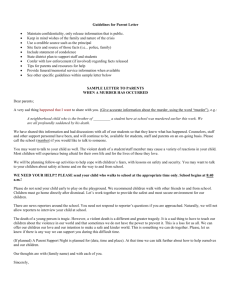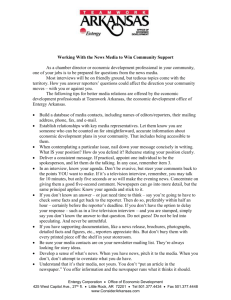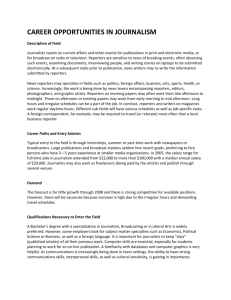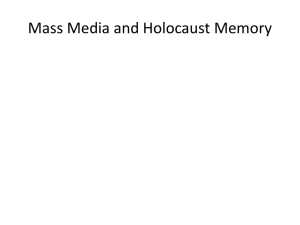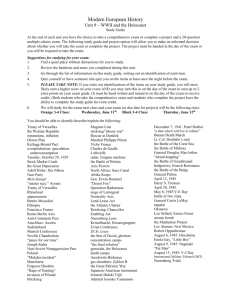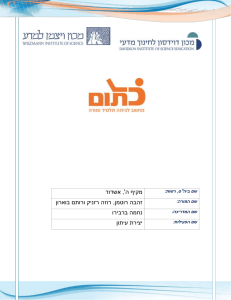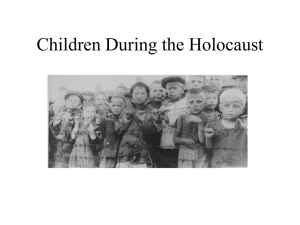Ethics Case Studies in Media & Journalism
advertisement
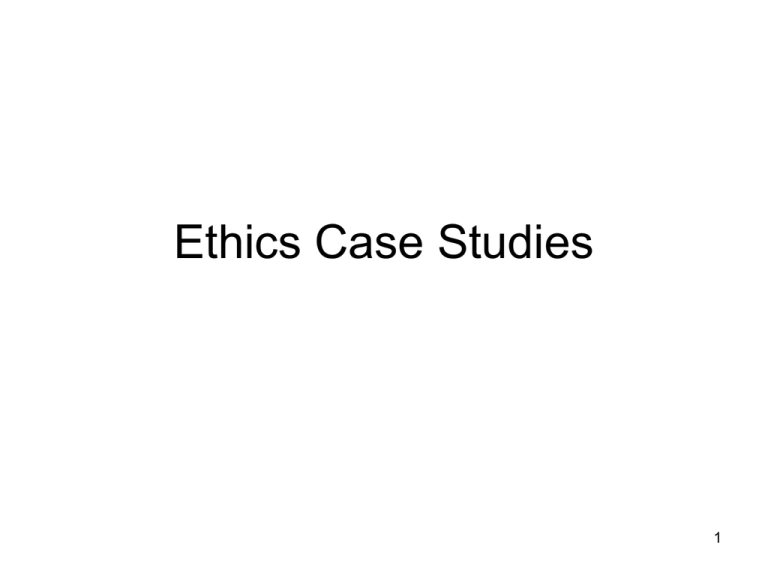
Ethics Case Studies 1 Cooperating with the Government It began on Jan. 18, 2005, and ended two weeks later after the longest prison standoff in recent U.S. history. The question: Should your media outlet go along with the state’s request not to release the information? 2 A Suspect “Confession” John Mark Karr, 41, was arrested in mid-August in Bangkok, Thailand, at the request of Colorado and U.S. officials. During questioning, he confessed to the murder of JonBenet Ramsey. Karr was arrested after Michael Tracey, a journalism professor at the University of Colorado, alerted authorities to information he had drawn from e-mails Karr had sent him over the past four years. The question: Do you break a confidence with your source if you think it can solve a murder — or protect children half a world away? 3 The Media’s Foul Ball The Chicago Cubs in 2003 were five outs from advancing to the World Series for the first time since 1945 when a 26year-old fan tried to grab a foul ball, preventing outfielder Moises Alou from catching it. The hapless fan's identity was unknown. But he became recognizable through televised replays as the young baby-faced man in glasses, a Cubs baseball cap and earphones who bobbled the ball and was blamed for costing the Cubs a trip to the World Series. The question: Given the potential danger to the man, should he be identified by the media? 4 Publishing Drunk Drivers’ Photos When readers of The Anderson News picked up the Dec. 31, 1997, issue of the newspaper, stripped across the top of the front page was a New Year’s greeting and a warning. “HAVE A HAPPY NEW YEAR,” the banner read. “But please don’t drink and drive and risk having your picture published.” Readers were referred to the editorial page where White explained that starting in January 1998 the newspaper would publish photographs of all persons convicted of drunken driving in Anderson County. The question: Is this an appropriate policy for a newspaper? 5 A Self-Serving Leak San Francisco Chronicle reporters Mark Fainaru-Wada and Lance Williams were widely praised for their stories about sports figures involved with steroids. They turned their investigation into a very successful book, Game of Shadows. And they won the admiration of fellow journalists because they were willing to go to prison to protect the source who had leaked testimony to them from the grand jury investigating the BALCO sports-and-steroids. Their source, however, was not quite so noble. The question: Should the two reporters have continued to protect this key source even after he admitted to lying? Should they have promised confidentiality in the first place? 6 Using the ‘Holocaust’ Metaphor People for the Ethical Treatment of Animals, or PETA, is a nonprofit animal rights organization known for its controversial approach to communications and public relations. In 2003, PETA launched a new campaign, named “Holocaust on Your Plate,” that compares the slaughter of animals for human use to the murder of 6 million Jews in WWII. The question: Is “Holocaust on Your Plate” ethically wrong or a truthful comparison? 7 Controversy over a Concert Three former members of the Eagles rock band came to Denver during the 2004 election campaign to raise money for a U.S. Senate candidate, Democrat Ken Salazar. John Temple, editor and publisher of the Rocky Mountain News, advised his reporters not to go to the fundraising concerts. The question: Is it fair to ask newspaper staffers — or employees at other news media, for that matter — not to attend events that may have a political purpose? Are the rules different for different jobs at the news outlet? 8 Ethics & Our Case Studies 9 www.spj.org/ecs14.asp 10
